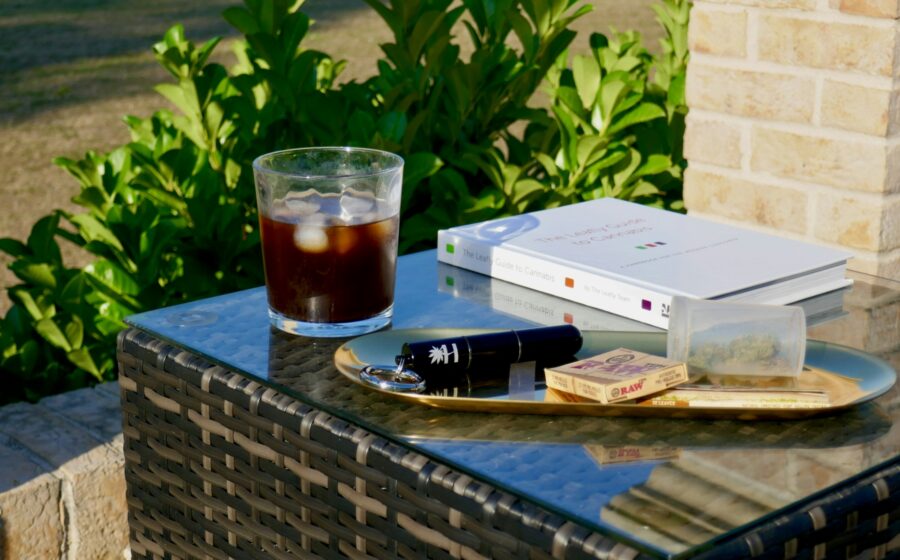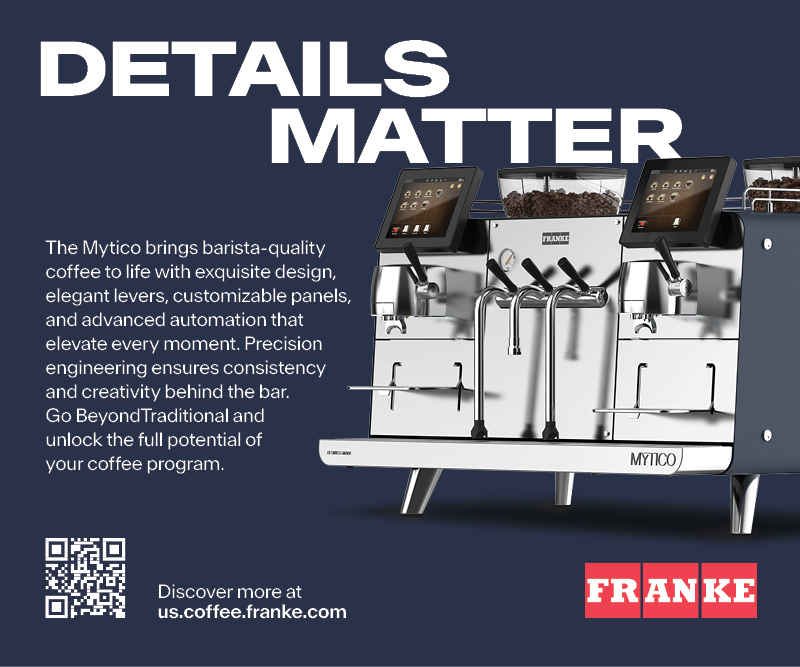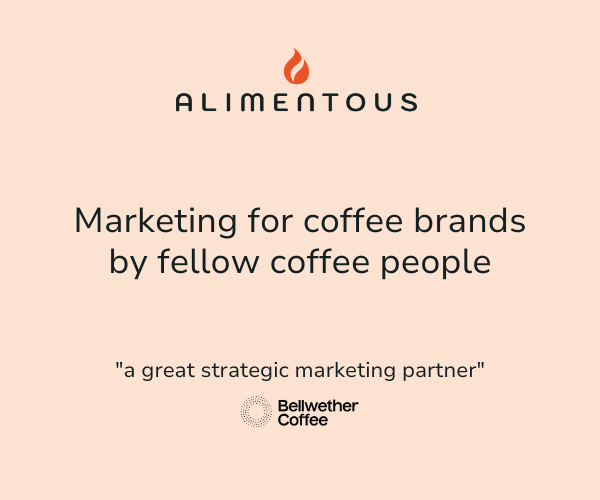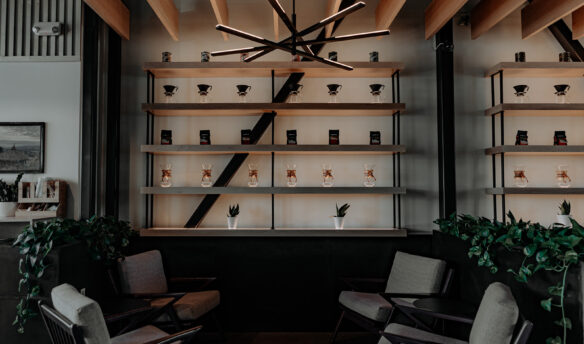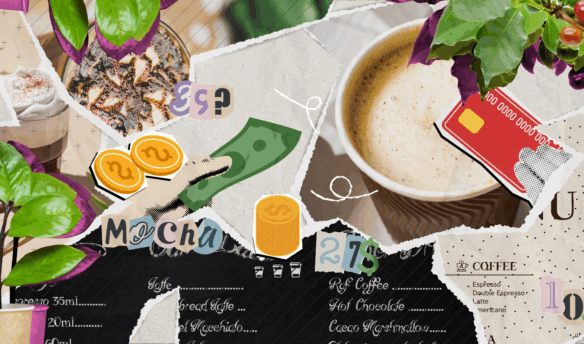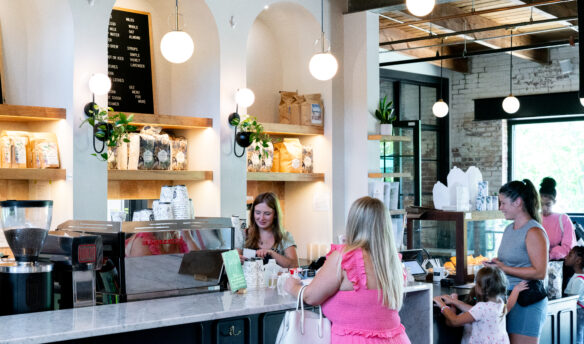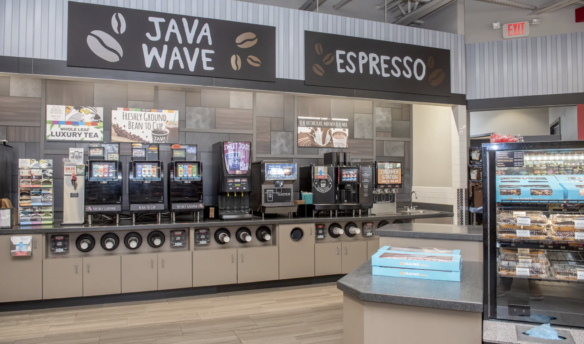Most mornings, Ashley Keenan adds cannabis to her coffee.
How the Canada-based journalist and content strategist chooses to mix caffeine and cannabis changes. Some mornings, she’ll add a tasteless, THC-containing liquid emulsion to her cup, poured from what’s designed to look like a sugar packet for ease and portability. Other days, she’ll squeeze a CBD-infused honey from a pre-portioned straw into her tea.
Keenan has been using cannabis medicinally for nearly 10 years. “Cannabis helps treat my chronic pain and neuropathy and keeps me off prescription medications with a laundry list of side effects,” she says. She’s far from alone—many people use products infused with tetrahydrocannabinol (THC) or cannabidiol (CBD) to manage pain, mental health, and the simple stresses of everyday life.
Coffee and cannabis have a lot in common. Both are rich in compounds with myriad effects on our brains and bodies—and though you can’t get “high” from drinking coffee, consuming too much can result in jitters. Both industries have what some might call “conventional” and “specialty” versions, with cultivated strains and recognizable differences in quality and traceability.
And while coffee has long been the more commonly consumed of the two, you only need to sniff the streets of New York City, Seattle, or Las Vegas to notice that recreational cannabis use is becoming more ubiquitous. As of 2024, 24 U.S. states, the District of Colombia, and two U.S. territories allow recreational consumption. (Federally, cannabis remains a regulated Schedule I drug.) Internationally, countries including Canada, Thailand, and Uruguay have legalized commercial cannabis sale nationwide (though Thailand may reverse this decision), and many more have legalized or decriminalized its recreational use.
The growing popularity of cannabis has led some coffeehouses to experiment with serving the two products, but combining cannabis and coffee isn’t a new phenomenon. In Amsterdam, “coffeeshops” have sold cannabis products alongside coffee since the 1970s. In the U.S., CBD-infused drinks hit cafe menus in the mid-2010s, and evolving regulations continue to change the cannabis beverage landscape.
Coffee’s second wave made cafes the unofficial symbol of leisure time. Now, cannabis’ increasing popularity will likely affect how people interact with, and what they consume in, the classic “third place.”
Not Your Average Amsterdam Coffeeshop
In the Netherlands, a “coffeehouse” (koffiehuis) is different from a “coffeeshop.” The former sells coffee and light bites, and the latter is an establishment where visitors can buy and smoke weed or hash, and eat cannabis-infused edibles.
The term “coffeeshop” first emerged as a cover for the sale of cannabis before it was decriminalized in 1976. The Dutch government allows the roughly 560 remaining, licensed coffeeshops to sell cannabis products under strict conditions, like limits on noise and total cannabis in the shop. Commercial cannabis is otherwise illegal nationwide.
Abraxas Coffeeshop in Amsterdam also serves coffee and other non-alcoholic beverages. “Both our cannabis and drink menu reflect our high standards for quality,” says Abraxas CEO Kaya Ardic. From its soft drinks to its cannabis strains, Abraxas sources from local vendors whenever possible. While some cannabis strains come from Thailand and the U.S., “we’re focused on working with Dutch growers,” Ardic says.
Ardic’s parents founded Abraxas in 1992; the original location is just a one-minute walk from its current site in the city center. “My mom and dad put up a bar and invited all the artists in the neighborhood. It was like an art exhibition and cafe in one,” he says. After many years, during which Ardic encouraged his father to learn more about how to source and store cannabis, his parents passed on the baton.
At Ardic’s incarnation of Abraxas, “All our drinks come in nice glasses, but you’re allowed to light up a joint and enjoy a spliff.” Of the shop’s interior, which Ardic’s mother designed to look “a bit witchy,” he says, “It doesn’t feel like a dark hole with loud music. We have an open atmosphere and natural light, good vibes and happy music.”
As a result, visitors are often surprised that they can smoke inside. “Nine out of 10 times when people come in, they ask, ‘But where do I smoke this?’ And we say, ‘Right here.’ And they say, ‘No way, that’s ridiculous,’” Ardic laughs. “We’re a very attractive shop for first-timers,” he says, many of whom hear about the spot through word of mouth.
The coffeeshop doesn’t neglect its coffee, either. Ardic says that Valentina, one of the bar managers, “is doing wizardry with the coffee machine.” Her efforts encouraged the rest of the team to start a friendly latte art competition, and customers often post photos of their espresso drinks on Instagram.
However, the way people opt to combine cannabis (a stimulant and depressant) and caffeine (a stimulant) is highly individual. While animal studies have explored the interaction between caffeine and THC, human research is still lacking, leaving many to share their anecdotal experiences.
“If you smoke something more relaxing, like an indica,” Ardic says, referring to a strain of cannabis associated with calming experiences, “and drink a coffee, I think it would balance out.”
Dispensary Meets Cafe
Eric Stahl of Modern Apotheca, a dispensary in Raleigh, North Carolina, thinks coffee and cannabis can work hand in hand. “As an avid user of both, I find that caffeine helps counteract the sleepiness often associated with cannabis,” he wrote in an email.
His wife, Corey Stahl, uses cannabis to manage an autoimmune condition. This was one of the couple’s motivations to open The Burnt Pot Cafe, which is the only Alcohol Business Control-certified private hemp bar in North Carolina. Customers must be 21 years of age or older to partake. “This designation allows us to serve infused beverages in a controlled and compliant environment, setting us apart as pioneers in the industry,” Stahl writes. The Pleasure Med dispensary in West Hollywood has a similar concept: its Irie Restaurant offers a private dining room that allows cannabis consumption.
For those not into a smoke-filled cafe, edibles provide an alternative mode of consumption. In the U.S., the THC potency of products sold by licensed dispensaries is regulated by individual states; however, the 2018 U.S. Farm Bill made it possible for commercial businesses like liquor stores to sell low-dose, hemp-infused beverages even in states where cannabis isn’t recreationally legal, like North Carolina.
State-level regulations are actively evolving. For now, such businesses must operate within a strict regulatory environment, which includes ensuring products meet the Farm Bill’s legal threshold of <0.3% THC—a hotly debated part of the bill, which has been extended through at least 2026.
Ten years ago, businesses that wanted to experiment with substances like CBD had to add CBD oil directly into brewed coffee; the oil would remain on the surface without mixing, which muted the effects. But today, The Burnt Pot’s menu features “cannaccinos” (hot drinks) and “PotTails” (cold drinks) with THC- and/or CBD-infused syrups and spirits as the base. The Stahls contract-manufacture a ready-to-drink, hemp-infused seltzer called PotTails, also used to create seasonal variations on Starbucks drinks.
Stahl says The Burnt Pot’s community focus is key to its success. “While the dispensary is consultative-driven and focused on education, it doesn’t lend itself to a ‘hangout and chill’ environment,” he says. The cafe, by contrast, “is a space to gather, share experiences, and explore the world of hemp together.” The Burnt Pot hosts events such as comedy shows, trivia nights, and specialty art classes like “Puff, Puff, Paint.”
Keenan understands the need for such a space. She has been reporting on cannabis since 2018, when recreational cannabis was legalized in Canada, but says that consumption still faces a lot of stigma. Although medical use has been legal in Canada for more than 20 years, “it can feel like cannabis consumers are still stuck in alleyways and dark corners. If it remains hidden, it remains taboo.”
Keenan used to visit a Toronto cafe called the Hot Box, which allowed customers to consume cannabis products alongside coffee and tea, and play board games. However, the establishment was sold after cannabis was legalized. “When I was at the Hot Box, I felt so normal,” Keenan says. “I think there would be a lot less stigma if infused beverages were allowed in restaurants and cafes.”
A New Take on Leisure
Legal cannabis is attracting more interest, but it’s worth keeping its complicated history in mind. As Christina Cassidy, a sociologist and cannabis educator known as The Canncierge, wrote on Instagram in 2022, “The weed INDUSTRY sprung from the CULTURE, not the other way around. Folks new to our subculture, welcome! But please remember, respect and advocate for those who’ve been shamed, jailed, and maligned for their membership, unknowingly building the underpinnings of the access we enjoy.”
Historically, cannabis use has been disproportionately criminalized in Black communities, although Black and white people partake at similar rates. Today, it’s easier than ever to walk into a well-organized, beautifully designed dispensary on a whim, which can feel like a luxury experience when many people of color are still imprisoned for possession.
Though more work is needed to make the cannabis industry (not to mention the coffee industry) more racially equitable, cannabis decriminalization is slowly changing the tide. It’s also making cannabis available to the formerly skeptical.
If regulations loosen and adoption rates continue to rise, we may well see more cafes offering cannabis edibles in the pastry cabinet or hemp-infused drinks in the grab-and-go cooler.
Beyond building common spaces for the cannabis and coffee industries, this could help lovers of both find community. “To be able to have an infused drink with dinner while your partner has a beer? Sipping an infused coffee in a cafe?” says Keenan. “That would be bliss.”



